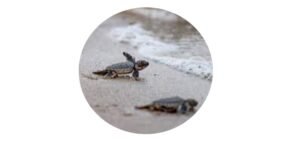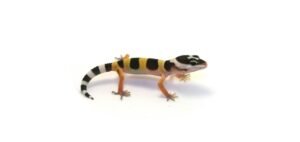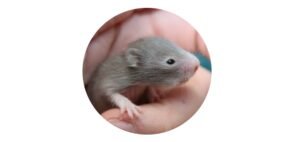7 Ways To Identify & Remove Baby Copperhead Snakes
Table of Contents
Baby Copperhead Snakes: All you need to know
The disease control center reports that approximately 7,000 to 8,000 people are the victim of venomous snake bites each year. Copperhead a venomous snake may be a major culprit associated with it. The bite of a baby copperhead is less fatal but more painful.
Their resulting bites may only require some anti-venom but it may result in complications in the elderly, infants, and people with a compromised immune system. These snakes bite when they are stepped on are when people pick them up.
This guide provides 7 easy steps to identify this venomous snake and ways to avert any mishap and how to handle them.
How to identify a baby copperhead?
There are some misconceptions and myths surrounding venomous snakes. One of them is that their babies cannot regulate the amount of venom they inject and may inject more venom than adults.
This is a wrong conception as the venom glands in small copperheads are small and can hold only a small quantity of venom. They are also capable of regulating the amount of venom they inject based on the prey size known as venom metering.
The second common myth is that all venomous snakes possess a triangular head. Venomous snakes like pit vipers have triangular heads that help to incorporate their venom glands.
This trait can also be observed in non-venomous snakes that mimic this by extending their jaws and flattening their heads.
There are also narrow head venomous snakes like coral snakes that are the second deadliest snake.
To identify copperhead snake the following steps can guide you
1. Look at their tail-tip color: Baby copperheads generally are born with a bright green or yellow tip to their tail. This color at the tips attracts the prey so they can strike them easily. With their help, the baby copperheads grow quickly as they find food easily. After a year their tails become dark black or brown.
2. Look for an hourglasses pattern: These snakes have a characteristic pale pinkish-tan and their heads are copper in color. A distinct uniform pattern that resembles a dark hourglass could be observed. These patterns consist of dark brown marking bands that appear thin over their spine and broad over their belly that has brownish-red spots over white.
3. They have facial pits: Copperheads belong to the pit viper family. Pair of heat sensors are present on either side between the nostril and the eyes in pit vipers. These pits help in thermoregulation and in hunting for prey.
They have to depend on these as they have poor eyesight. Heat sensing ability helps them visualize the world in infrared. Pits may be difficult to observe from far.
4. They have vertical (slitted) pupils: These venomous snakes have vertically slitted pupils that appear like cat-eye pupils. They have enchanting golden-yellow eyes characterized by a thin black pupil slit in the center. The pupils of non-venomous snakes are round.
5. Do they have keeled scales? Keeled scales refer to raised scales that give a rough texture to the snakes. The scales are characterized by a ridge along the center that gives them a raised triangle shape.
These kinds of scales can be observed in all venomous scales. This trait may be difficult to recognize without touching that is not recommended unless you are an expert. People should rely on other traits like their tails and pattern for identification.
6. Do they have a short but thick body type? Their juvenile snakes have a short but thick body like most venomous snakes. They are around d 7-10 inches long while the adults grow to be 24-36 inches long. Their babies are thin for the first 3 months but quickly grow in thickness when there is a steady supply of food.
7. Look for post-vent scutes: This identification trait should only be left to experts as it can be fatal to flip a snake to examine its tail. Flipping them over makes them frantic and they can try to strike.
Scutes refer to the long straight scales seen over the belly of the snakes that help them in locomotion. This trait sets apart the baby copper tails. These scutes give a zipper-like appearance in the case of non-venomous snakes while in venomous scales they form single elongated scales that pass the vent.
Snakes Commonly Confused for Copperheads include Cornsnake, Juvenile Mole King Snake, Eastern Hognose, and Northern Water-Snake. The U.S has reported over 125 species of snakes that may be confused with copperheads due to their similar appearance.
For instance, the juvenile Eastern Rat snake is black and grey with large spots over the spine but lacks the hourglass pattern.
How to safely remove baby copperheads?
Once Copperhead Snake has been spotted and recognized it is important to know the follow-up steps. If it is near the edge of the yard observe them as they will slither away without the need of any intervention as they may be just passing by. If it has to be moved follow the steps below.
Use a hook: If copperheads are common in your region invest in snake handling devices. This precautionary measure may be the safest method to handle the snake. The hook should be at least 3 feet that create a safe zone.
To utilize the hook, gently slide the pointed end to the middle of the baby snake that makes it unable to slither off. Vibrate the hook so they hold on to the hook as they are fickle. Move the snake into a tub or large bucket if necessary using a clamp stick.
Use a clamp (grab) stick: Another effective method is to grab a snake to hold it securely. A grab stick works similarly to the trash grabber. A trigger can be found on the handle that is linked to a pulley that closes the clamp. For picking the snake slide the bottom part of the clamp arm to the center of the snake’s body.
Firmly but slowly close the clamp enclosing the snake but do not squeeze too hard on the clamp as this may injure the snake. Then relocate or move the snake to a bucket. Care should not be taken to grab the tail region or neck with a clamp or hook as it may kill or injure the snake.
Alternative tools to use
If these tools are not present for immediate use find other alternate tools like a long stick or object to grab the snake. The object should be about 3 feet long so that a safe distance can be maintained.
A shovel can also be employed to scoop the snake and move it to a tub. If they are slithering then a shovel can be used to gently shove the snake into an overturned bucket to trap it. Whatever you use ensure a safe zone of about 3 feet between the snake and yourself.
Signs a baby copperhead is stressed
Moving a snake can be stressful for it and they may coil. In threatened positions they may react by shaking their tail and coiling up, trying to slither away, striking out, musking and hissing.
These signs should be observed as they may indicate whether the snake will strike or not. If the snake demonstrates these behaviors step back and give them time to be calm before attempting to move them again.
How to stop baby copperheads from entering your yard?
The best precautionary measure might be to prevent them from entering or nesting in the yard in the first place. Tall grasses may invite them as they like to stay hidden. Regularly mow the lawn to avoid their entry.
To snake-proof your yard
Identify any holes in your yard that they can burrow in. The next step is to fill them up. Regularly rake leaves and bushes. Bushes may provide a perfect hiding place for them so they should be tended.
Physical deterrents like snake fences can also be employed to prevent entry into the yard. Commercial traps should be avoided as they can injure the snake and are generally unsuccessful. These inhumane contraptions are not recommended.










